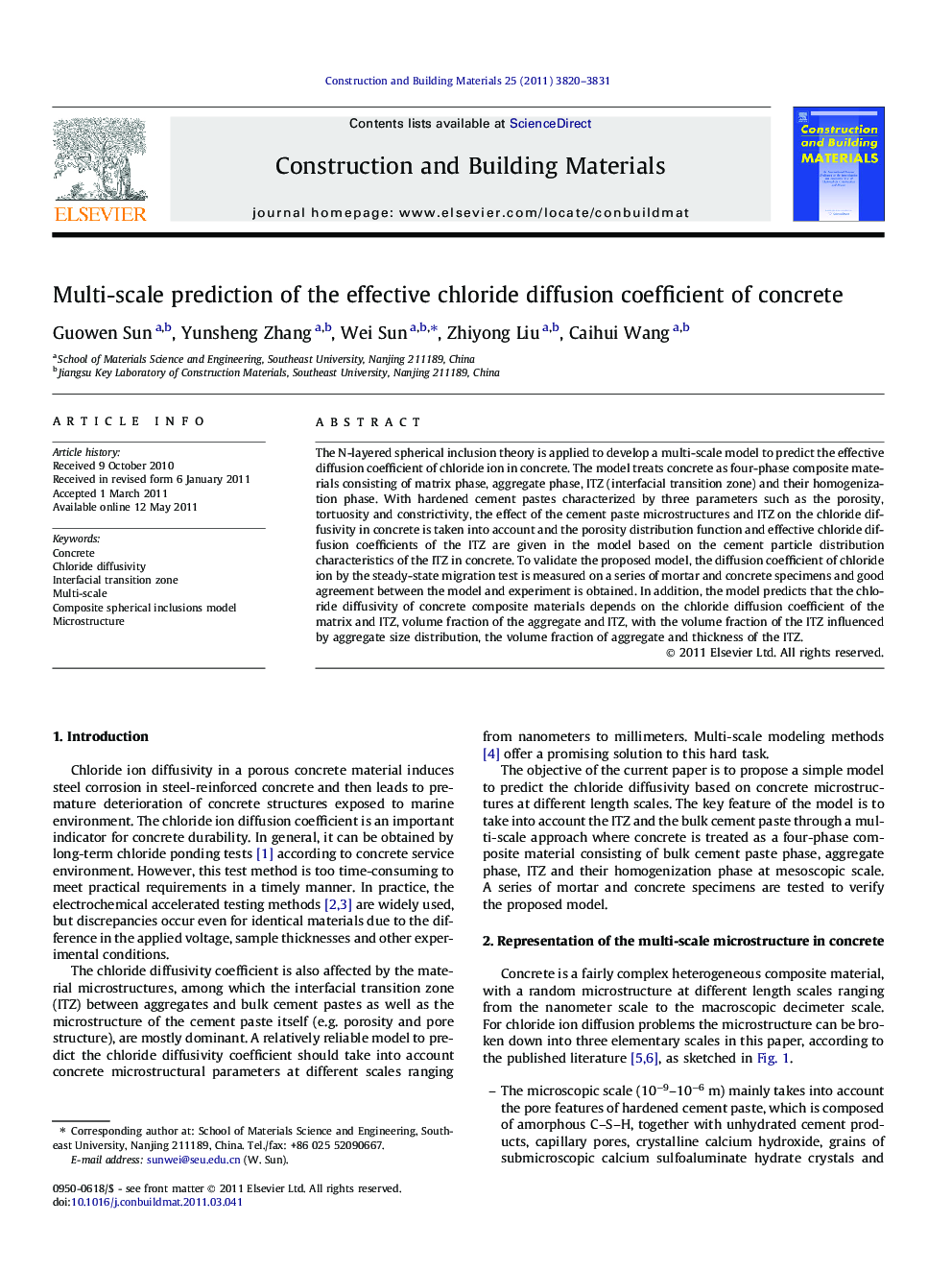| Article ID | Journal | Published Year | Pages | File Type |
|---|---|---|---|---|
| 259474 | Construction and Building Materials | 2011 | 12 Pages |
The N-layered spherical inclusion theory is applied to develop a multi-scale model to predict the effective diffusion coefficient of chloride ion in concrete. The model treats concrete as four-phase composite materials consisting of matrix phase, aggregate phase, ITZ (interfacial transition zone) and their homogenization phase. With hardened cement pastes characterized by three parameters such as the porosity, tortuosity and constrictivity, the effect of the cement paste microstructures and ITZ on the chloride diffusivity in concrete is taken into account and the porosity distribution function and effective chloride diffusion coefficients of the ITZ are given in the model based on the cement particle distribution characteristics of the ITZ in concrete. To validate the proposed model, the diffusion coefficient of chloride ion by the steady-state migration test is measured on a series of mortar and concrete specimens and good agreement between the model and experiment is obtained. In addition, the model predicts that the chloride diffusivity of concrete composite materials depends on the chloride diffusion coefficient of the matrix and ITZ, volume fraction of the aggregate and ITZ, with the volume fraction of the ITZ influenced by aggregate size distribution, the volume fraction of aggregate and thickness of the ITZ.
►Multi-scale methods predict the effective diffusion coefficient of chloride ion in concrete. ►Chloride diffusion coefficient of ITZ is obtained by numerical calculation. ►Effective medium equation predicts chloride ion diffusion coefficient of hardened cement paste. ► Microstructure of harden cement paste and ITZ is introduced into model proposed..
